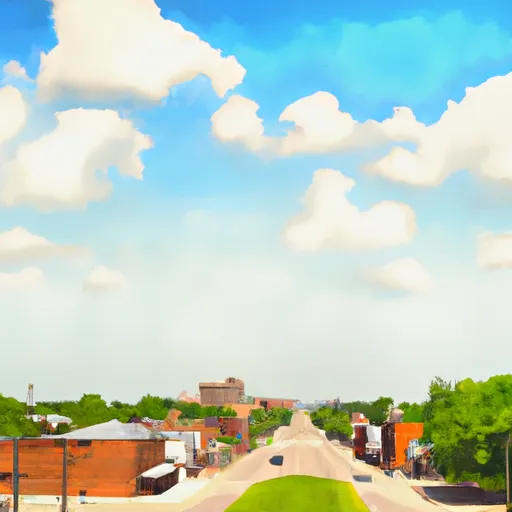-
 Snoflo Premium
Snoflo Premium
Get unlimited access to all our content
With no Ad interruptions! - Start Your Free Trial Login with existing account
Jonesville
Eden Index
Climate
8.2
•
Recreation
2.8
•
Community
•
Safeguard
4.3/10

Jonesville, Indiana is a charming town nestled in the heart of the state, offering a diverse range of outdoor recreation opportunities. The climate in Jonesville is characterized by four distinct seasons. Summers are warm and humid, with temperatures ranging from the mid-70s to low 90s Fahrenheit. Winters are cold and snowy, with temperatures ranging from the 20s to the low 40s Fahrenheit. Spring and fall bring mild temperatures and colorful foliage.
Jonesville is home to several water bodies, including the scenic Jonesville Lake and the meandering Cedar River. These hydrology constituents provide ample opportunities for fishing, boating, and kayaking. Anglers can expect to catch a variety of fish species, including bass, catfish, and crappie.
In addition to its aquatic offerings, Jonesville boasts numerous outdoor recreation opportunities. The town is surrounded by lush forests, making it an ideal destination for hiking, camping, and wildlife viewing. Jonesville State Park is a popular spot for nature enthusiasts, offering well-maintained trails and breathtaking vistas.
Overall, Jonesville, Indiana provides a beautiful natural environment with a diverse range of outdoor activities for residents and visitors to enjoy throughout the year.
What is the Eden Index?
The Snoflo Eden Index serves as a comprehensive rating system for regions, evaluating their desirability through a holistic assessment of climate health, outdoor recreation opportunities, and natural disaster risk, acknowledging the profound impact of these factors on livability and well-being.
Climate Health Indicator (CHI): 8.2
Jonesville receives approximately
1164mm of rain per year,
with humidity levels near 81%
and air temperatures averaging around
12°C.
Jonesville has a plant hardyness factor of
6, meaning
plants and agriculture in this region thrive during a short period during spring and early summer. Most
plants will die off during the colder winter months.
By considering the ideal temperature range, reliable water supplies, clean air, and stable seasonal rain or snowpacks, the Climate Health Indicator (CHI) underscores the significance of a healthy climate as the foundation for quality living.
A healthy climate is paramount for ensuring a high quality of life and livability in a region, fostering both physical well-being and environmental harmony. This can be characterized by ideal temperatures, reliable access to water supplies, clean air, and consistent seasonal rain or snowpacks.
Weather Forecast
Streamflow Conditions
Patoka-White
Area Rivers
Patoka-White
Snowpack Depths
Patoka-White
Reservoir Storage Capacity
Patoka-White
Groundwater Levels
Recreational Opportunity Index (ROI): 2.8
The Recreational Opportunity Index (ROI) recognizes the value of outdoor recreational options, such as parks, hiking trails, camping sites, and fishing spots, while acknowledging that climate plays a pivotal role in ensuring the comfort and consistency of these experiences.
Access to outdoor recreational opportunities, encompassing activities such as parks, hiking, camping, and fishing, is crucial for overall well-being, and the climate plays a pivotal role in enabling and enhancing these experiences, ensuring that individuals can engage in nature-based activities comfortably and consistently.
Camping Areas
| Campground | Campsites | Reservations | Toilets | Showers | Elevation |
|---|---|---|---|---|---|
| Edgar Evins State Park | 60 | 929 ft | |||
| Long Branch - Center Hill Lake | 60 | 818 ft | |||
| Delaney Creek Park | None | 584 ft | |||
| Salt Lick Creek - Cordell Hull Lake | 145 | 574 ft | |||
| Starve Hollow State Rec Area | 200 | 552 ft | |||
| Hardy Lake State Rec Area | 170 | 650 ft | |||
| Defeated Creek - Cordell Hull Lake | 155 | 527 ft | |||
| Floating Mill - Center Hill Lake | None | 977 ft | |||
| Jackson - Washington State Forest | None | 672 ft | |||
| Cove Hollow - Center Hill Lake | None | 702 ft |
Nearby Fishing
Nearby Ski Areas
Catastrophe Safeguard Index (CSI):
The Catastrophe Safeguard Index (CSI) recognizes that natural disaster risk, encompassing floods, fires, hurricanes, and tornadoes, can drastically affect safety and the overall appeal of an area.
The level of natural disaster risk in a region significantly affects safety and the overall livability, with climate change amplifying these risks by potentially increasing the frequency and intensity of events like floods, fires, hurricanes, and tornadoes, thereby posing substantial challenges to community resilience and well-being.
Community Resilience Indicator (CRI):
The Community Resilience Indicator (CRI) recognizes that education, healthcare, and socioeconomics are crucial to the well-being of a region. The CRI acknowledges the profound impact of these elements on residents' overall quality of life. By evaluating educational resources, healthcare accessibility, and economic inclusivity, the index captures the essential aspects that contribute to a thriving community, fostering resident satisfaction, equity, and social cohesion.

